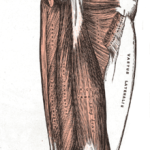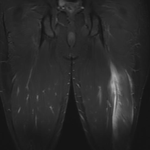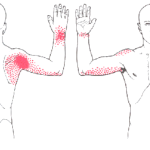We all know that hamstring injuries are an exceptionally common sporting injury. In some sports, such as Australian Football League (AFL), they have the highest incidence of any injury (Warren et al 2010). Therefore the sports physiotherapist will routinely assess and rehabilitate these injuries.
During this process the athlete and coaching staff will frequently demand timeframes of return to training and play. Thus, if you are a sports physiotherapist who treats these athletes you should be acutely aware of the clinical predictors, or prognostic indicators, of return to play timeframes following hamstring injury.
PREDICTORS OF RTP
The following have been found to be significant predictors of length of recovery:
Higher V.A.S at the Time of Injury: Verrall et al (2003) found a high correlation (r=0.77) between pain, measured by visual analog scale, and days lost from competition. Interestingly, in this study pain was a more accurate prognostic indicator than clinician’s assessment.
Recent Past History of Hamstring Injury (Within 12 Months): Warren et al. 2010 found that athletes with a recent history of hamstring strain, i.e. within the last 12 months were 4.2 times more likely to take greater than 3 weeks to return to play.
Time to Walk Pain Free: Warren et al (2010) found that athletes that took longer than 24 hours to walk pain-free with a normal gait pattern where 4 times more likely to take longer than 3 weeks to return to play than those who did not.
Location of Strain (Medial vs. Lateral): Schneider-Kolsky et al (2006) found that site of injury i.e. biceps femoris, was a significant predictor of longer recovery time. This is supported by Warren et al (2010) who found a trend towards biceps femoris strains being 2.3 times more likely to take longer than 3 weeks to recovery. However, the results of Warren et al (2010) did not reach statistical significance.
LIMITATIONS
There are some limitations in the best available research. Unfortunately, the majority of the research has been undertaken in elite athletes, mostly Australian Footballers. This means that it is possible that these indicators may not be generalisable to the general athletic population.
Also, you will find that whilst some of the research presents conflicting results. The studies frequently disagree on the predictors of return to play. For example, Verall et al (2003) found no correlation between clinician determined site of injury and prognosis, which as you are aware, conflicts the results of Schneider-Kolsky et al (2006). Such conflicting results question the validity of the findings.
CLINICAL IMPLICATIONS
This research suggests, as you might expect, a definitive return to play timeframe cannot be given to any athlete following hamstring injury. However, this research may allow you to give them some indication of when they can expect to return to play and where they fit along the spectrum of hamstring injury.
I find it interesting that in many studies the prognostic indicators are more accurate than a clinician’s judgement on initial assessment. Thus, as always, you should be as objective as possible. The main clinical implication, therefore, is that you should incorporate these assessment components into your return to play algorithm and consider them when answering the unavoidable question – “When will I be right to play again?”.
What are your thoughts on determining return to play timeframes for hamstring injuries? Do you use these indicators or have greater anecdotal success with others?
REFERENCES
Askling C, Saartok T, Thorstensson A. Type of acute hamstring strain affects flexibility, strength, and time to return to pre-injury level. Br J Sports Med 2006;40:40–4.
Schneider-Kolsky ME, Connell DA, Hoving JL, et al. A longitudinal study comparing sonographic and MR imaging assessment of acute and healing hamstring injuries. Am J Sports Med 2006;34:1008–15.
Verrall GM, Slavotinek JP, Barnes PG, et al. Diagnostic and prognostic value of clinical findings in 83 athletes with posterior thigh injury: comparison of clinical findings with magnetic resonance imaging documentation of hamstring muscle strain. Am J Sports Med 2003;31:969–73.
Warren P, Gabbe BJ, Schneider-Kolsky M et al. Clinical predictors of time to return to competition and of recurrence following hamstring strain in elite Australian footballers. Br J Sports Med 2010 44: 415-419
Related Posts









